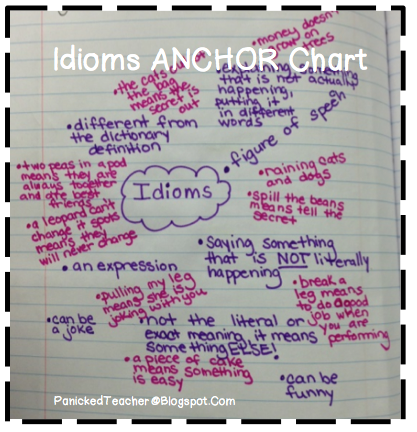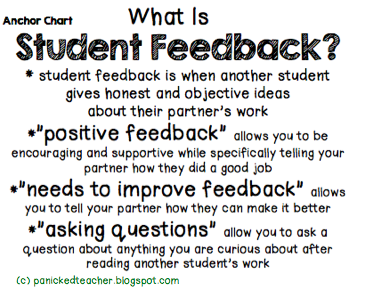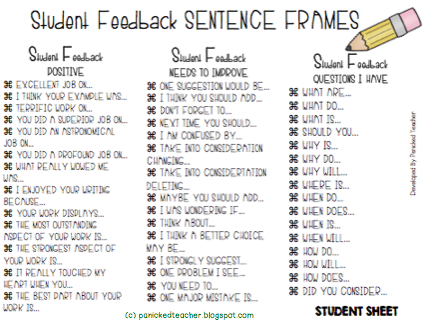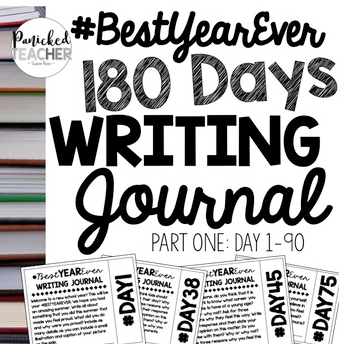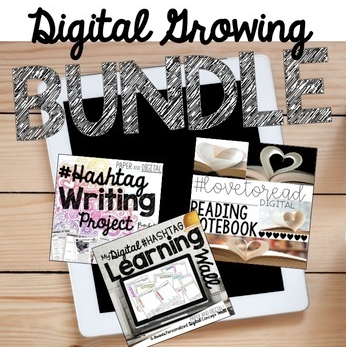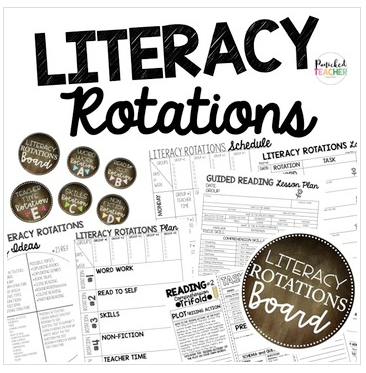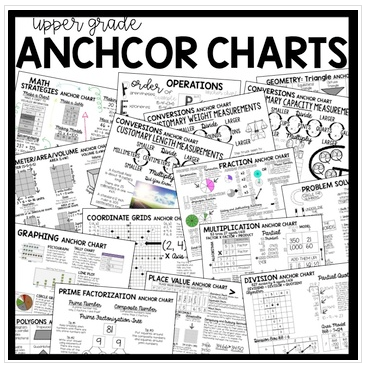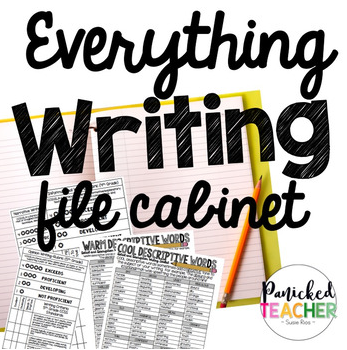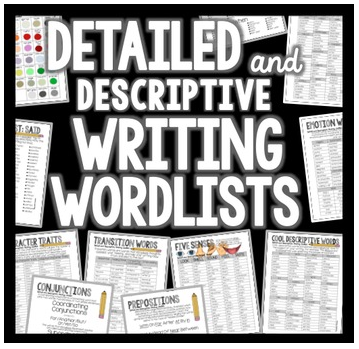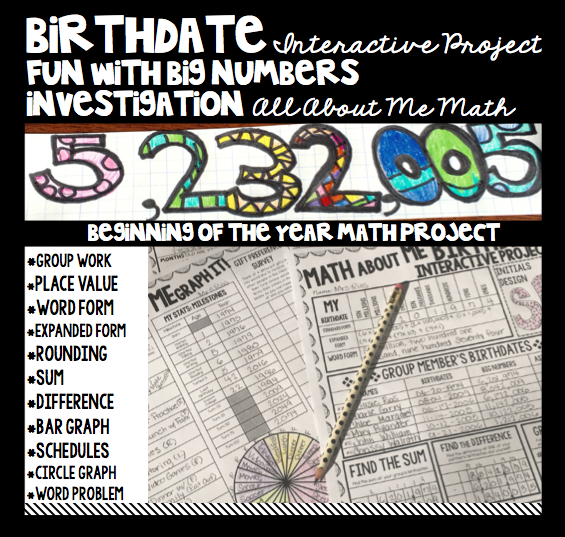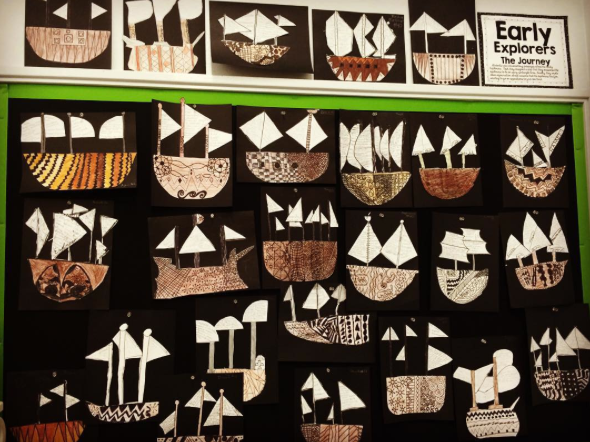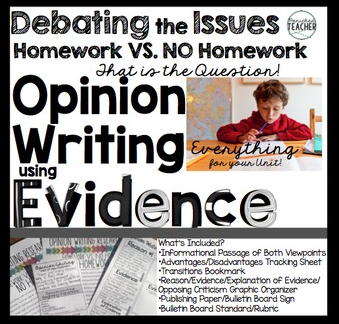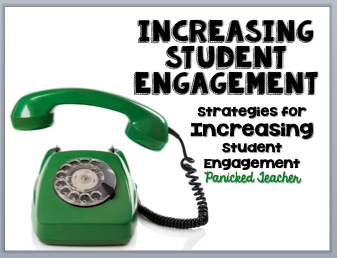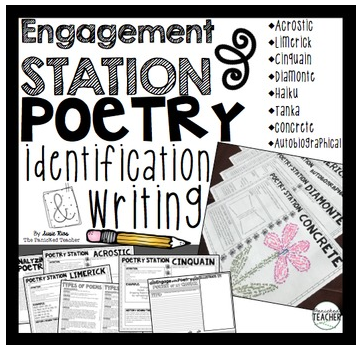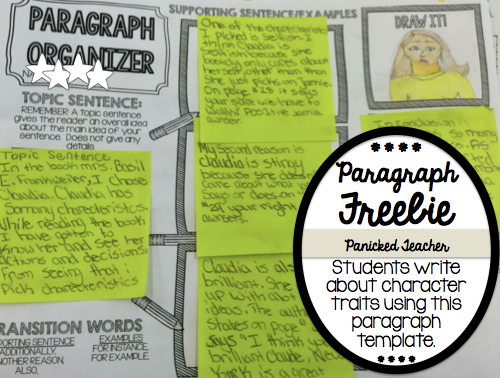We began learning about figurative
language last week so our first stop was IDIOMS! Here are some tips that I have found help when teaching idioms!
#1 Make an Anchor Chart
Making the anchor chart seen above allowed me to assess the student's knowledge of what idioms were (seen in the purple) and examples of idioms they already know (seen in the pink). My 5th graders already knew ALOT about idioms BUT had difficulty explaining what they actually meant.
#2 Consider Your Audience
I have a student this year that loves......pickles! On Fridays, when the class shares what they will be doing for the weekend he always replies, "eating pickles!" The other students find this HILARIOUS. So, to play along, our first idiom of the year that we focused on was, "He was really in a pickle when he missed the train."
#3 Choose an Approach
Are idioms something you want to focus on for a few weeks OR something that you want to incorporate into your classroom the entire school year? I have been using my Idiom of the Week unit in my classroom so that I can make it a year long activity. The students get really into it and look forward to see what the upcoming idiom will be! Find my "Idiom of the Week" unit here. Here are some outstanding samples!
#4 Organize the Idioms
I always use the anchor chart that I make in the beginning of the school year to plan my instruction for the rest of the school year. I don't want to teach them idioms they already know! I use the list below to organize my idioms and figure out what I will be teaching first. This sheet is a good tool that I have when planning the rest of the year since I can mark which ones I have already covered, etc... (This list is from my Idiom of the Week unit)
#5 Organize a Student Search
This year I am having a figurative language wall where students can add the different types of figurative language that they come across as they are independently reading books. They will add the idioms etc... to post it notes and add them to the wall (pics coming soon!)
What tricks and tips do you have for teaching idioms in your classroom?
#1 Make an Anchor Chart
Making the anchor chart seen above allowed me to assess the student's knowledge of what idioms were (seen in the purple) and examples of idioms they already know (seen in the pink). My 5th graders already knew ALOT about idioms BUT had difficulty explaining what they actually meant.
#2 Consider Your Audience
I have a student this year that loves......pickles! On Fridays, when the class shares what they will be doing for the weekend he always replies, "eating pickles!" The other students find this HILARIOUS. So, to play along, our first idiom of the year that we focused on was, "He was really in a pickle when he missed the train."
#3 Choose an Approach
Are idioms something you want to focus on for a few weeks OR something that you want to incorporate into your classroom the entire school year? I have been using my Idiom of the Week unit in my classroom so that I can make it a year long activity. The students get really into it and look forward to see what the upcoming idiom will be! Find my "Idiom of the Week" unit here. Here are some outstanding samples!
Here is a freebie from my "Idiom of the Week" unit.
Click on the pic to be taken to the link.
I always use the anchor chart that I make in the beginning of the school year to plan my instruction for the rest of the school year. I don't want to teach them idioms they already know! I use the list below to organize my idioms and figure out what I will be teaching first. This sheet is a good tool that I have when planning the rest of the year since I can mark which ones I have already covered, etc... (This list is from my Idiom of the Week unit)
#5 Organize a Student Search
This year I am having a figurative language wall where students can add the different types of figurative language that they come across as they are independently reading books. They will add the idioms etc... to post it notes and add them to the wall (pics coming soon!)
What tricks and tips do you have for teaching idioms in your classroom?

